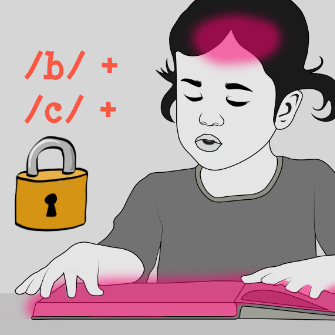I just want to share with you a great article I found about how to help your children with their schooling during this uncertain period that we all are going through.
This article has some great tips from an educator who has 20 years of teaching experience and two master’s degrees in the education field.

Here’s the article:
Across the United States, parents are settling into the idea that the current coronavirus outbreak will require many to take over for teachers and child care providers into the foreseeable future. On March 16, President Trump raised the possibility that the coronavirus crisis might last until August.
With schools across the country closed and unlikely to reopen soon, families are gathering teaching materials, setting up schedules, and looking for ways to keep kids engaged beyond the limited hours of remote-learning school days. Parents who are pros at packing lunches and juggling sports practices may feel overwhelmed at the thought of managing students’ school days at home.
My own children started their school’s remote-learning on March 16 and, even as an educator with 20 years of experience and two master’s degrees in the education field, organizing their schedule consumed my morning. So, I decided to create a few resources to help families manage the sudden demand for at-home learning.
But first, take comfort in knowing that school-based lessons rarely go perfectly even for professional teachers. Kids struggle with instructions and get frustrated, no matter how well we prepare.
But first, take comfort in knowing that school-based lessons rarely go perfectly even for professional teachers. Kids struggle with instructions and get frustrated, no matter how well we prepare. Teachers spend much of their preparation time analyzing activities to improve the next lesson. As families step into teaching roles, it’s crucial to treat inevitable missteps as learning opportunities. Trust me, this has already been a week of trial and error at my house.
Consistency helps students focus, so start with a daily schedule. Skilled teachers often begin the school year with a great deal of structure, because kids learn most easily when they know what to expect. A schedule also allows parents and other caregivers to share duties. By building in breaks, choice and a range of activities, parents can tailor plans to meet children’s individual needs.
But be flexible and keep your child’s experience and personality in mind. A child who has attended a Montessori program may thrive with several work centers spread around the home, while one used to a more traditional setting may feel comfortable with a tighter schedule. Either way, be ready to set up daily plans while adapting to what works well.

 Easy, Simple 15 Minutes A Day Reading Method Turned My Child From A Struggling Reader To An Advanced Reader. Works Great For Young Children Too. Click To Learn More.
Easy, Simple 15 Minutes A Day Reading Method Turned My Child From A Struggling Reader To An Advanced Reader. Works Great For Young Children Too. Click To Learn More.
If your child’s school offers remote learning, use the provided assignments to create a basic structure for each day, supplementing them as needed with activities that round out the curriculum. Even the most thorough remote-learning plans won’t occupy students all day and most families will need to find additional activities. I have compiled a list of resources below to help your search.
You can give older kids a sense of investment each day by asking them to help formulate their own schedule.
You can give older kids a sense of investment each day by asking them to help formulate their own schedule. But don’t get too caught in your lesson plan. Listen to your child. If they say, “I don’t get it,” or, “I’m tired and I can’t do this,” hear them out rather than telling them what to do next. Once you’ve heard how they’re feeling, ask them to read the directions aloud, or point you to the section that’s confusing. This will show them you are listening and let them make progress.
Parents with children of multiple ages have the extra challenge of balancing multiple remote-learning plans. Delegate tasks to older students — added responsibility can be inspiring for kids, even if they complain about it. Once in teacher mode, try staggering school start times, setting up multiple learning areas, and matching the noise level of different projects so everyone is loud at the same time.
When teaching, wait for eye contact before giving verbal instructions to kids. After you’re done, ask them to restate the main points of what you’ve said. Get to the child’s eye level to help communication, and limit verbal directions to two steps for preschoolers and three steps for older kids. The remote-learning situation will test everyone’s patience, so remember to take time for yourself.
Structure academic activities around kids’ attention spans. Most elementary-school kids can work on assignments for around 25 minutes before they need a break.
Structure academic activities around kids’ attention spans. Most elementary-school kids can work on assignments for around 25 minutes before they need a break. Use a timer or time-management software to arrange breaks, which can also become transitions to new tasks. Or have kids do some jumping jacks, get a drink of water, take a short walk, climb stairs or play a game to help them refocus. Avoid online videos or graphic novels until the end of the day. These make good rewards, but can be distracting midday. For preschoolers, try a clean-up song or talking through the next activity to make transitions smoother.
A typical school day rewards students with opportunities to show independence, help friends and overcome challenges. The shift to learning from home still gives children the chance to develop autonomy, practice empathy and use their skills — particularly when parents set up structures, then stand back to let kids shine.
Special thanks to Katherine Hill of the New York Times for her great article. If you are interested in reading the rest of the article, you can find the article here.
When your child learns to read at an early age, it expands their vocabulary and opens up their love for learning. It helps build their confidence and vastly improves their learning abilities.
And based on my experience, having the right reading methodology when teaching your child learn to read makes a world of difference.
I should know as I made that mistake. 😢
In fact, you can read my story about my child’s struggle with reading here and how we were able to help my child become an advanced reader here. 😀🤗
